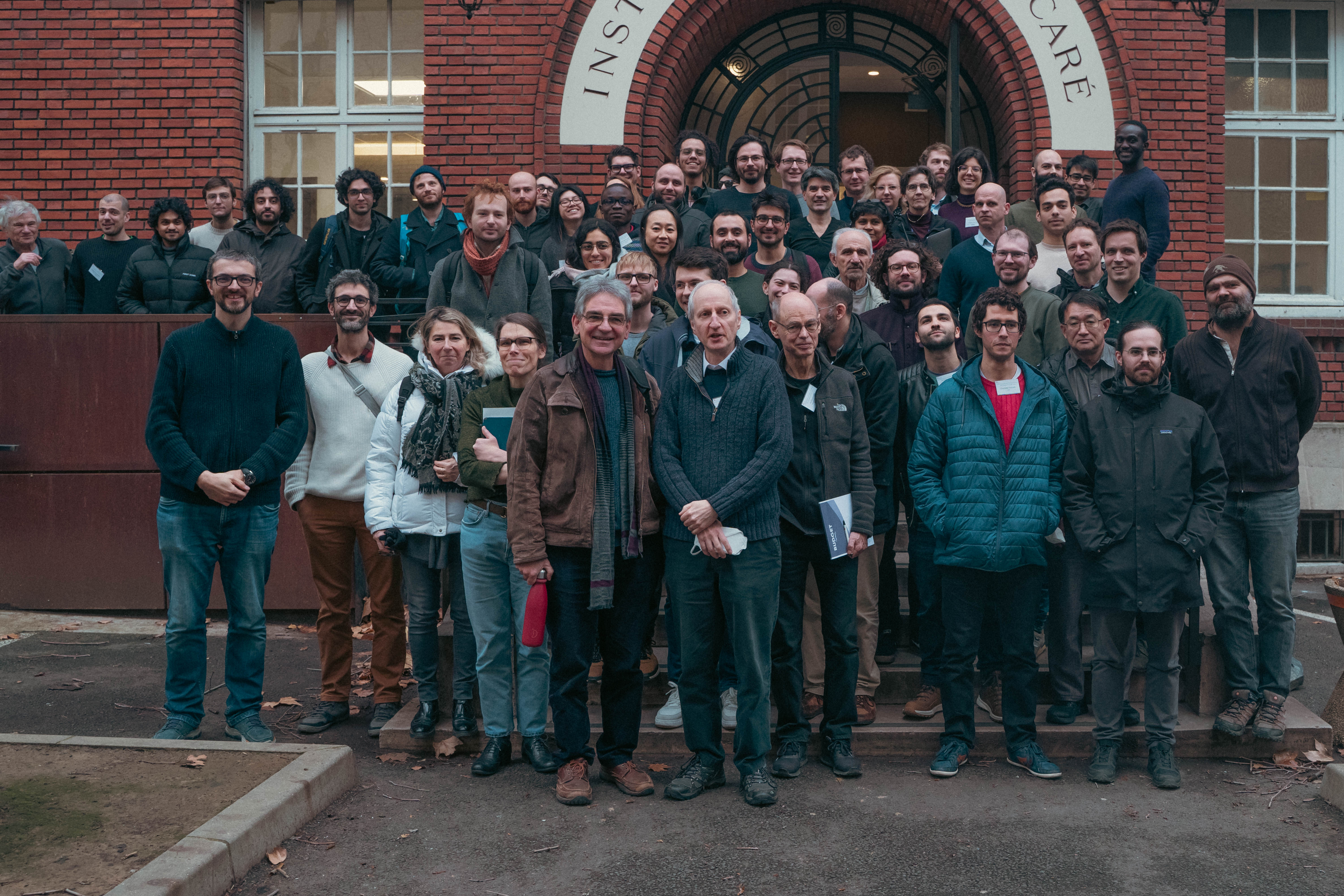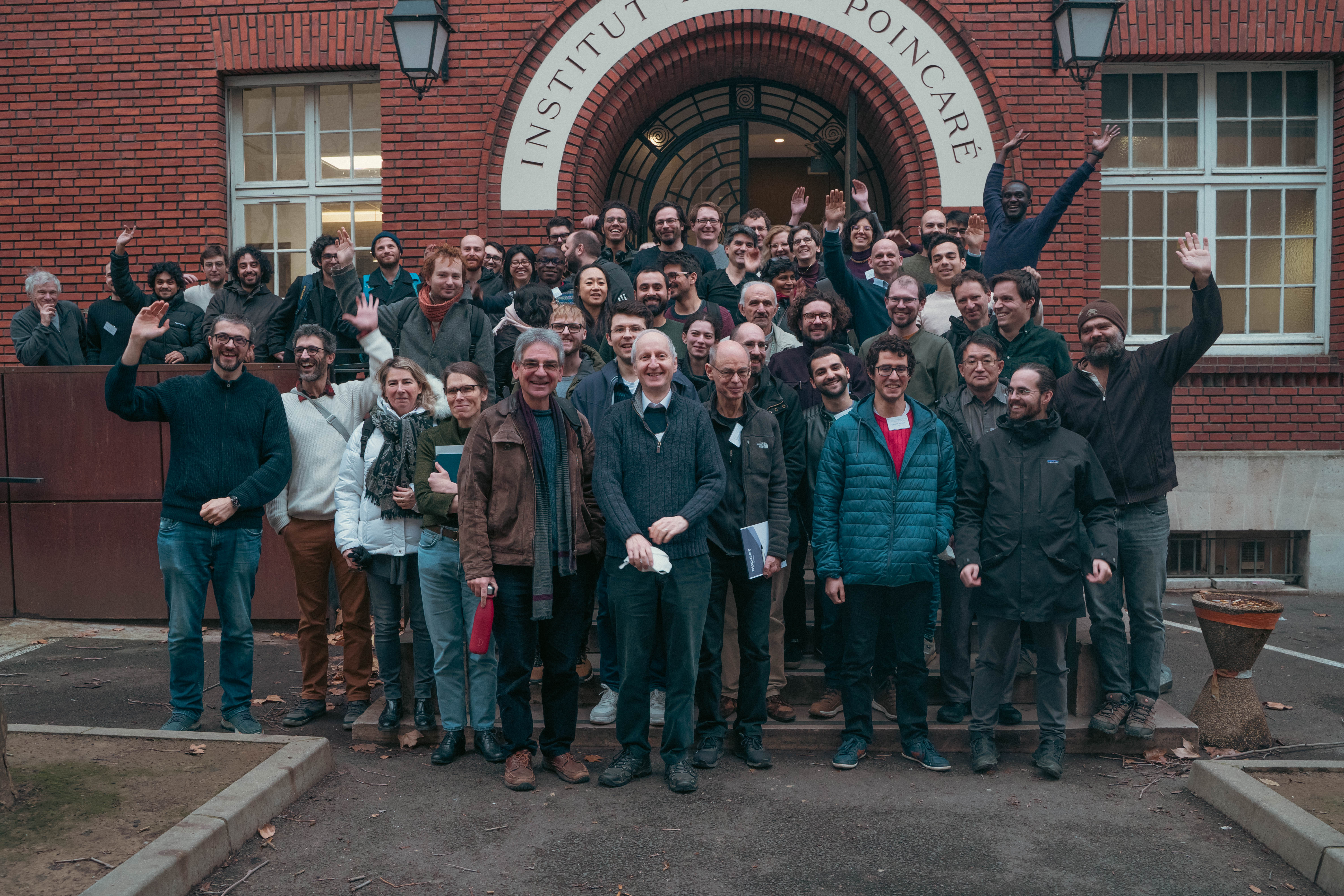- Indico style
- Indico style - inline minutes
- Indico style - numbered
- Indico style - numbered + minutes
- Indico Weeks View
Quantum Gravity and Random Geometry
→
Europe/Paris
Amphithéâtre Hermite (Institut Henri Poincaré)
Amphithéâtre Hermite
Institut Henri Poincaré
11 rue Pierre et Marie Curie
75005 Paris
Description
This workshop is part of the thematic six-weeks program "Quantum gravity, random geometry and holography" held at Institut Henri Poincaré, Paris (program main page)
The workshop will be devoted to quantum gravity approaches in two, three, and four dimensions, with an emphasis on the random geometry point of view.
In the tradition of the conference series ``Quantum Gravity in Paris'', we aim at bringing together researchers working on various approaches to quantum gravity, fostering an open minded exchange of ideas and techniques, to be continued in the weeks after the workshop.
Video recordings of the talks are available on carmin.tv.
Invited speakers:
Jan Ambjorn (NBI, Denmark)
Laurent Baulieu (LPTHE, Sorbonne Univ., France)
Valentin Bonzom (Univ. Sorbonne Paris Nord, France)
Gaetan Borot (Humboldt-Universität zu Berlin, Germany)
Timothy Budd (IMAPP, The Netherlands)
Sylvain Carrozza (IMB, Dijon, France)
François David (CEA Saclay, France)
Bianca Dittrich (Perimeter Institute, Canada)
Maïté Dupuis (Perimeter Institute, Canada)
Renata Ferrero (Johannes Gutenberg University Mainz, Germany)
Florian Girelli (U. Waterloo, Canada)
Thomas Krajewski (CPT, Aix-Marseille Univ., France)
Riccardo Martini (INFN, Pisa, Italy)
Tim Morris (Univ. Southampton, UK)
Daniele Oriti (LMU, Munich, Germany)
Antonio Duarte Pereira (Fluminense Federal University, Brazil)
Andreas Pithis (LMU, Munich, Germany)
Marcus Reitz (Jagiellonian University, Krakow, Poland)
Naoki Sasakura (Kyoto Univ., Japan)
Simone Speziale (CPT, Marseille, France)
Sumati Surya (Raman Research Institute, India)
Johannes Thürigen (Univ. Münster, Germany)
Reiko Toriumi (OIST, Japan)
Raimar Wulkenhaar (Univ. Münster, Germany)
Organizers:
John Barrett (University of Nottingham)
Dario Benedetti (Ecole Polytechnique)
Joseph Ben Geloun (Université Sorbonne Paris Nord)
Renate Loll (Radboud University Nijmegen)
Group photos:


Participants
Contact
